
Posts Tagged: trees for tomorrow
"Trees for Tomorrow Start Today" Master Gardener Program Application for San Bernardino County Residents
Applications Now Being Accepted for the University of California Cooperative Extension Master Gardener Program “Trees for Tomorrow Start Today” Project.
University of California Cooperative Extension (UCCE) San Bernardino County is currently recruiting adults (18 and over) who are interested in becoming volunteers for our "Trees for Tomorrow" project. Complete training is provided online through a 50-hour Master Gardener training class taught by subject matter experts. Master Gardener volunteers will provide research-based information on the selection and care of heat, drought, and pest resistant trees and help our non-profit partners and community leaders enhance tree canopy cover in our most vulnerable neighborhoods. (To date, we are proud to have partnered with the Inland Empire Resource Conservation District, CA Climate Action Fellows and many non-profit organizations, communities, ESRI, and others to give away over 600 trees in the last year!)
Applications to become a UCCE Master Gardener volunteer for this project are open through August 31, 2022. UCCE Master Gardener “Trees for Tomorrow” Volunteer Application link: http://ucanr.edu/u.cfm?id=287
Questions about the application process or the volunteer opportunity? Contact UCCE Area Environmental Horticulturist Janet Hartin at jshartin@ucanr.edu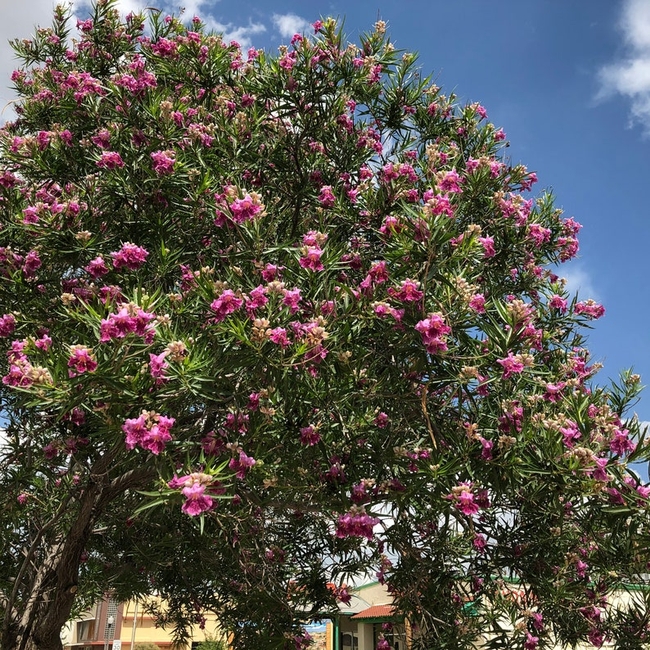
Why volunteer for this project? We are facing unprecedented times due to climate change and urban heat islands increasing temperatures in our communities. One of the solutions to a "cooler, greener, tomorrow" is through tree planting and proper selection and long-term care of heat, drought, and pest resistant trees.
Why trees? Shade produced by a single tree can reduce surface temperatures of asphalt and other impervious surfaces by up to 65 degrees F. Trees also lower air temperatures; enhance pollinator and wildlife habitat; absorb pollutants; reduce energy use and related costs (homes, offices, vehicles); beautify neighborhoods; absorb and store carbon dioxide; and provide many other ecosystem and societal benefits.
You can make a difference like never before enhancing tree canopy cover in our neighborhoods. Do you want to learn more about what UCCE Master Gardeners do for San Bernardino County residents and communities, find out what upcoming events they are hosting, or have them answer your horticulture questions Here's your pot of gold: https://mgsb.ucanr.edu/
We are looking forward to hearing from you!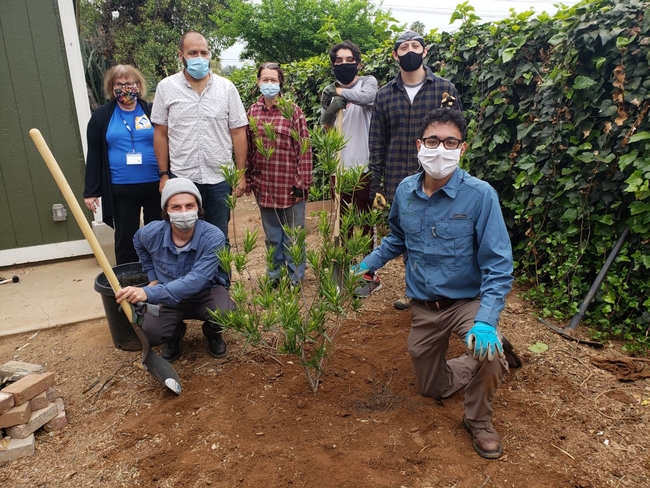
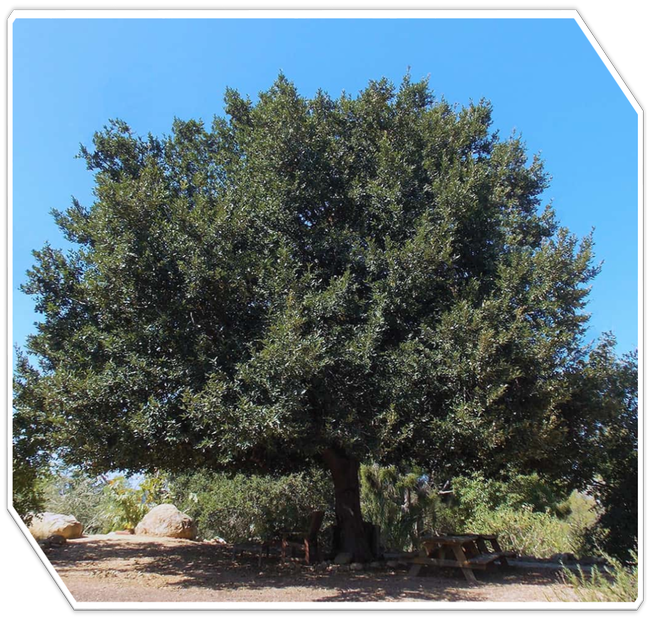
MG of SB County Tree
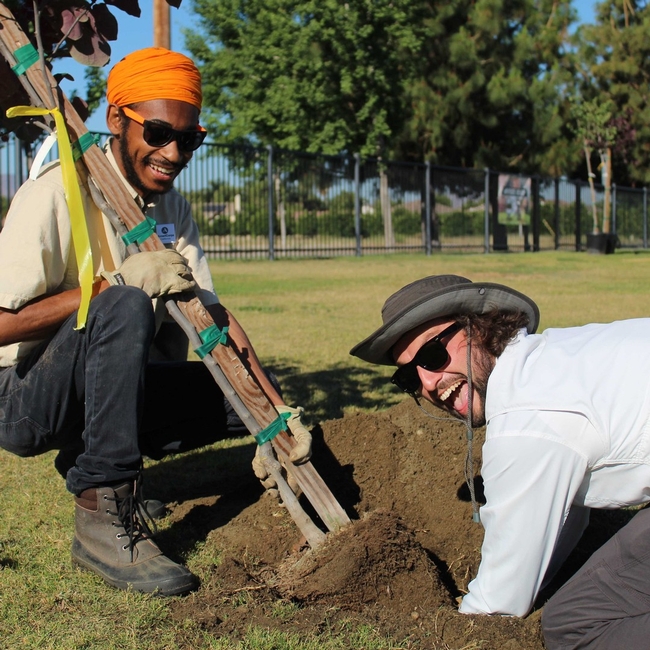
Trees for tomorrow 2021 Redlands Sports Park
Be part of the solution: Plant drought, heat, and pest resistant trees to combat urban heat islands
Our population of urban trees is shrinking! You can help turn this around by protecting your own trees and by planting new ones recommended for your climate and the conditions around your home. For more on this topic, please revisit my February blog for specific selection and care recommendations: https://ucanr.edu/b/~ZuB.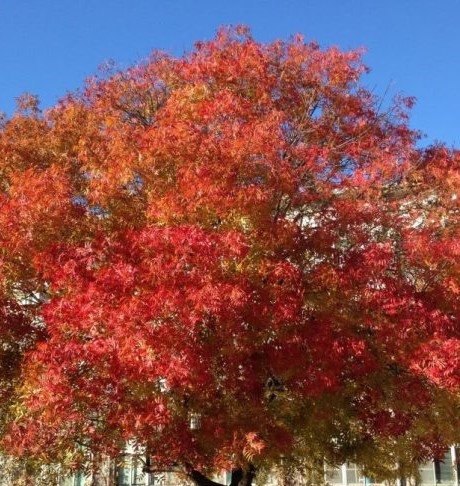
In addition, please encourage your city to plant a wide range of recommended species today for a healthier tomorrow. Why is this so important? Many of our current street trees are in the 11th hour of their lifespans. While some that were planted decades ago are simply aging naturally, in other cases, they are perishing prematurely due to poor selection and care. This leads to a downward spiral; trees not adapted to the climate they're planted in and not receiving proper care are much more susceptible to invasive pests (shot-hole borers, etc.) and diseases than are healthy, well- chosen and maintained trees. Even the loss of one front yard shade tree can significantly reduce shade, increase the surrounding temperature, and diminish energy savings.
Another reason we're losing our trees is due to the negative impacts of urban heat islands (UHIs) which shorten the lifespan of many species of trees dramatically. Some trees (even many natives!) just aren't able to withstand the higher temperatures (sometimes exceeding 20 degrees) they are subjected to due to UHIs.
What are urban heat islands and why should we care? Urban heat islands are caused by reradiated heat from paved concrete and (especially) asphalt surfaces. 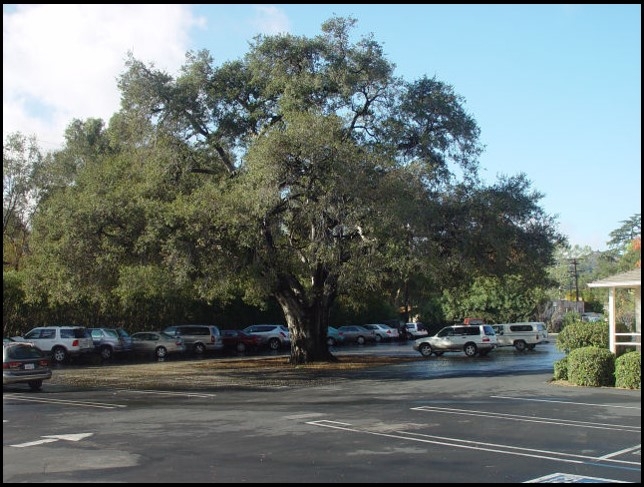
And, our cities are growing and expanding. Very few Southern California residents reside in rural areas. Instead of living near pastures, field-filled crops, and forests that cool the surrounding area through evapotranspiration, the vast majority of us reside in warmer urban city centers. Conditions we expect our city trees to endure in 2021 are very different from even 20 to 30 years alone, let alone decades ago.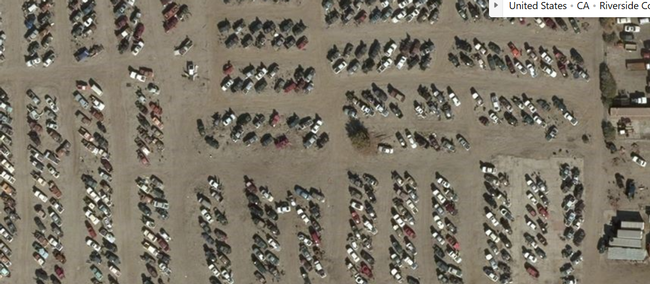
The good news is that, through proper tree selection and care, we can be a part of the solution. In fact, trees offer many benefits that offset the impacts of UHIs. Cities with larger tree canopies are a testament to this fact and have fewer adverse impacts from UHIs than do cities with low tree canopies. Trees reduce the impact of UHIs by shading parking lots, buildings, and vehicles), deflecting the sun's radiation, and cooling the atmosphere through evapotranspiration. Trees also absorb and store carbon which lessens the impacts of pollution from fossil fuels. A well-tended mature landscape tree can absorb 40 tons of carbon over its lifespan.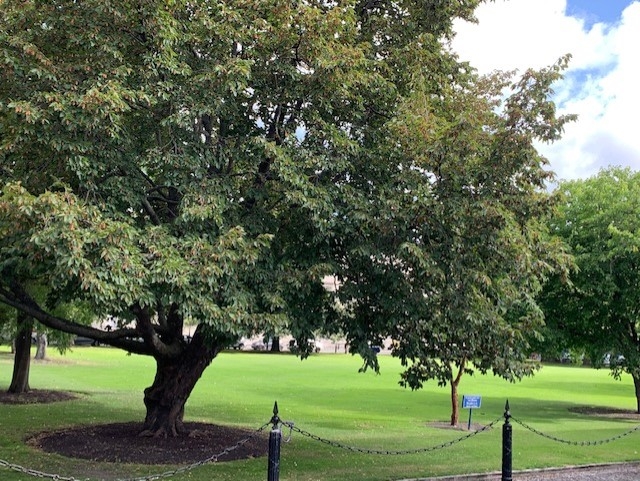
The solution? Augment our current urban tree palettes with heat, drought, and pest-resistant native and adapted non-native species. A case in point of a native tree in trouble is our beautiful Joshua trees (Yucca brevifolia) which are dying off in their namesake National Park and seeding 500 or more feet higher elevation than parent plants. Planting trees that withstand UHIs today is crucial for tomorrow.
We are well on the way to identifying landscape tree species that can remain healthy under adverse urban conditions. In our study examining the performance of 12 species of underplanted but promising landscape trees, several candidates are standing out for their heat, drought, and pest resistance.
'Trees for Tomorrow Start Today' Workshop (via Zoom) March 9, 2021 (8:15 AM - 3:00 PM)
Landscape trees provide shade, cool urban heat islands, reduce interior energy use and related costs, provide habitat for pollinators and wildlife, and beautify our communities. They also help clean our environment by absorbing carbon dioxide emitted by vehicles and other producers of fossil fuels.
Taking care of our urban trees is an important way to maximize these benefits. Unfortunately, their average lifespan in our cities is less than 1/4 of their potential due to poor selection and care. You can help enact change and increase the health, longevity and canopy coverage of our urban forests by encouraging your city leaders, local non-profit organizations interested in ‘green cities' arborists, landscape architects, nursery growers, HOAs, and concerned citizens to register for our free ‘Trees for Tomorrow Start Today' workshop (via Zoom) on Tuesday, March 9, 2021 (8:15am – 3pm).
Please reach out to your city leaders and local ‘green industry' professionals to encourage their attendance and participation. While the workshop is free, registration is required through this secure link: http://ucanr.edu/u.cfm?id=264
A bevy of speakers including certified arborists, horticulturists, planners, water district personnel and other non-profit and green industry representatives will discuss the benefits of urban trees; recommended practices for their selection and care; how to avoid hazardous trees that damage property and structures; and share success stories resulting from partnerships through cities, non-profit organizations, the green industry, HOAs, and street tree committees.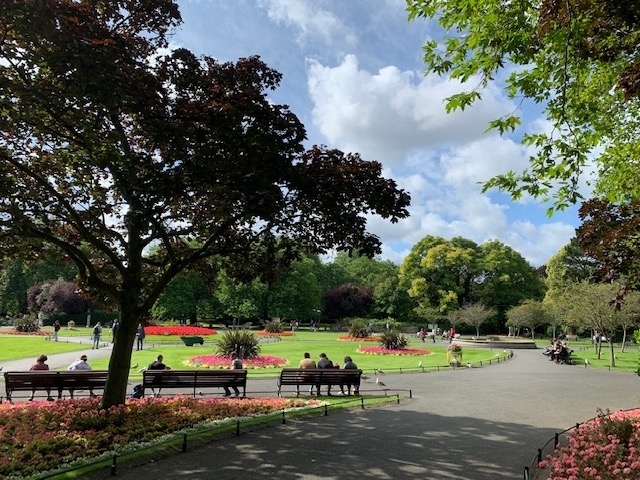
A highlight of the workshop will be the opportunity for attendees to participate in breakout sessions that cut across professions and interest groups (city planners, community service directors, arborists, landscape architects, landscapers, water district managers, HOA managers, golf course superintendents, nursery growers, UC master gardeners, concerned citizens, etc.) to enact positive change regarding tree selection and care.
Thank you for sharing this opportunity to help ensure a healthy future for our children's children with your city leaders and decision-makers.
In the meantime, here are some tree care tips to ‘start the conversation' between now and the workshop:
• Select trees that perform well in your climate. The Sunset Western Climate Zone maps are more precise than USDA zones for our warmer climates. Trees should also be selected based on their adaptation to the ‘micro-climate' in each particular landscape, as well (shade, proximity to buildings, space needs below as well as above ground, soil type, water source, etc.)
• Plant trees the same depth they were in their container in holes at least 2-1/2 times wider. Do not add compost or organic matter to the hole. This practice can result in circled roots that never grow laterally out of the confines of the dug hole.
• Remove any tree ties that are cutting into the trunk or branches of your trees. If trees must be staked due to windy conditions, make sure that the ties are loose enough to allow trees to gently flex in the wind. This helps trees develop the necessary lower trunk strength and stability to support the tree as it matures. Over time, you may be able to completely remove the ties and stakes once the lower trunk becomes stronger and self-supporting.
• Keep all plants and mulch several inches away from tree trunks.
• Keep tree trunks dry. They should not come into contact with water from sprinklers or hoses.
• Regularly water newly planted trees but water mature trees infrequently and deeply. Watering too often reduces the level of oxygen in the rootzone and can lead to waterlogged soils prone to crown and root rots. During fall, trees require only about 15% of the water they require in the summer.
• Prune trees only as needed and avoid topping them. Invest in the services of a credentialed and knowledgeable professional to correctly care for your valued trees. Find a list of International Society of Arboriculture Certified Arborists in your area here: https://www.treesaregood.org/findanarborist.
UCCE Master Gardeners Participate in Research to Identify Trees That Withstand Climate Change
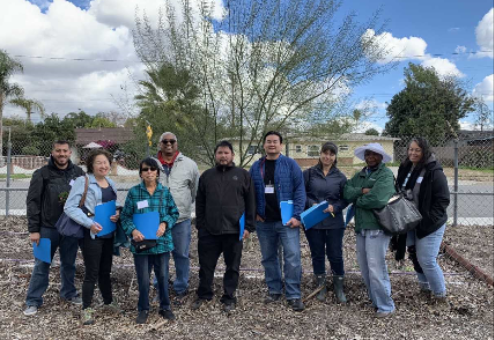
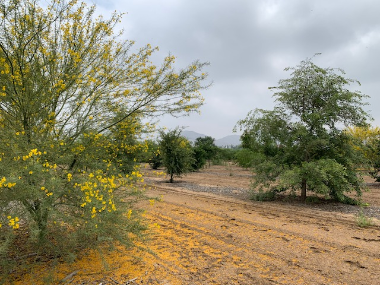
EditedImage (23)
